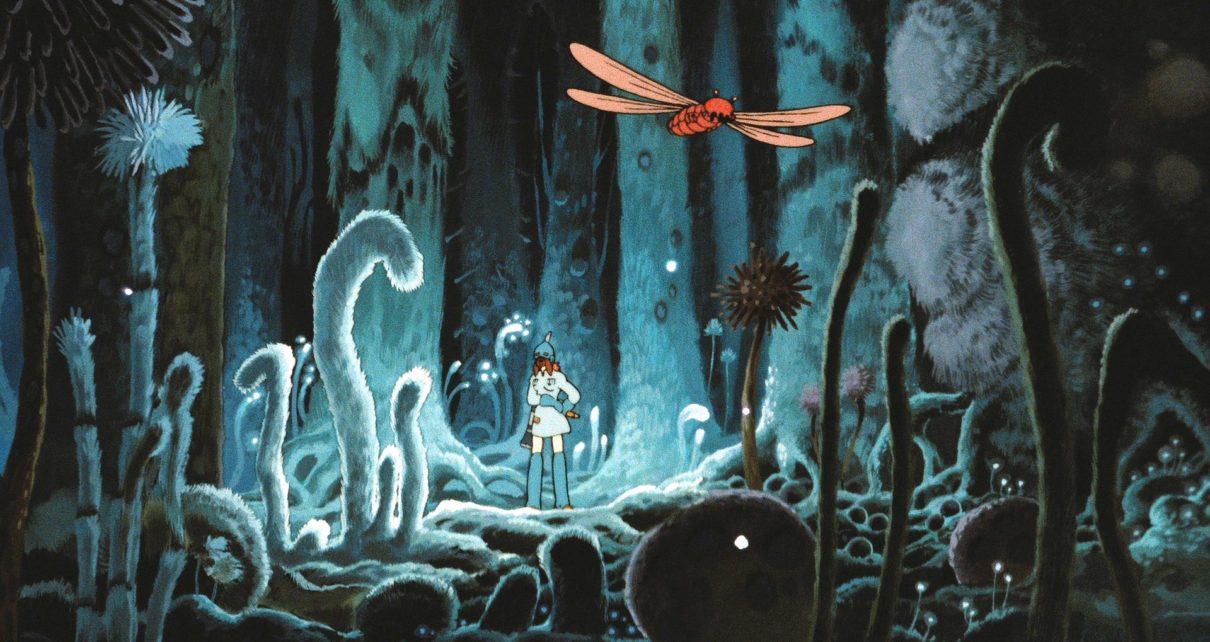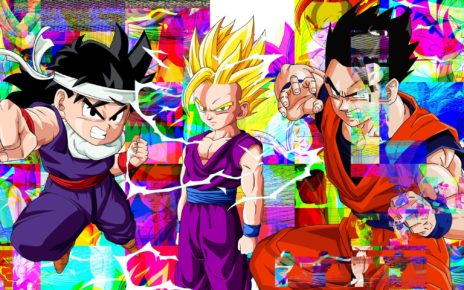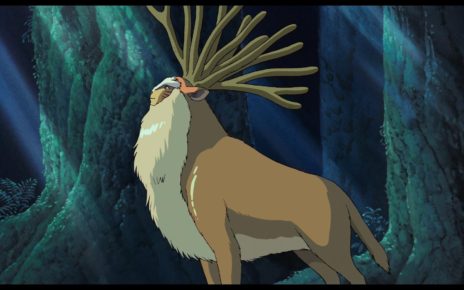This past year’s onslaught of urgent reports, extreme weather events, and global demonstrations sparked by the growing climate crisis has been, to say the least, overwhelming. The chaos of conflicting viewpoints and projected tipping points can make climate change resistance seem like a lost cause. Why not stick just our heads in the (uncomfortably hot) sand?
But trailblazing works of environmental cinema like Studio Ghibli’s Nausicaä of the Valley of the Wind and Princess Mononoke still have the ability to cut through the noise and remind us exactly what is at stake in a way little else can. While these films don’t sugarcoat humanity’s role in environmental destruction, they don’t oversimplify the problem, either. In an age of cardboard-cutout environmentalist supervillains like the MCU’s Thanos and DC’s Ocean Master, antagonists like Princess Mononoke‘s socially progressive industrialist Lady Eboshi seem incredibly nuanced. And far from becoming outdated, like some green cinema of the twentieth century, Nausicaä and Princess Mononoke seem, if anything, disturbingly prescient as we approach a new decade.
Both films paint a brutally honest picture of manmade climate change, as well as of humanity’s inability to cooperate when tackling the problem head-on. In Nausicaä, the war between the militarily aggressive kingdom Tolmekia and its neighboring nation-states and tribes drives the story, as Tolmekia exploits environmentally destructive forces to gain the upper hand. Similarly, in Princess Mononoke, Lady Eboshi destroys the forest surrounding her territory in order to bolster her position—and when disaster ensues, it falls to outsiders Ashitaka and San (the titular Princess of the Wolves) to find a solution. Unfortunately, in this respect, director Hayao Miyazaki’s understanding of human nature hits all too close to home.
But both Nausicaä and Princess Mononoke refuse to demonize their human characters, instead portraying their depth as flawed individuals fighting to make sense of an often hostile world. This is especially true of the latter. San is a staunch defender of her forest, but she’s also a black-and-white thinker who can’t bear to acknowledge her own humanity. And her nemesis, Lady Eboshi, may be an ambitious pragmatist willing to sacrifice almost anything to achieve her economic and political ends, but she also makes an effort to welcome the injured Ashitaka, cares deeply about her community, and is a fierce defender of the marginalized. Through Lady Eboshi and her ironworks, Princess Mononoke tackles an onerous question: Is prosperity possible without harming the planet? Princess Mononoke never passes an ultimate judgement, but instead ends on an ambivalent note, righting the worst of Lady Eboshi’s wrongs and allowing San and Ashitaka to find some kind of uneasy peace.
Although the peacemaking Princess Nausicaä is, at first glance, a simpler heroine than San, she also faces moments of rage and grief that push her to her limits. At several points in the film, we sense that she is on the brink of giving up on humanity. But her narrative foil, the militaristic Princess Kushana, reveals inverse moments of vulnerability. Kushana’s vendetta against the Ohmu, the giant insectoid arthropods that live in the toxic jungle that covers much of the film’s world, is deeply personal. Kushana is haunted by physical and psychological trauma, which is a reminder that nature can be cruel, and the decision to protect it at all costs may not be as simple as a heroine like Nausicaä makes it seem.
Miyazaki, however, embraces that complexity rather than attempting to erase it. It’s said that after a heavily edited, simplified version of Nausicaä was released in the USA, Studio Ghibli took no chances with Princess Mononoke. Before its release, Studio Ghibli sent the American distributors a katana with an inscription on its blade: “no cuts.” Miyazaki refuses to portray natural forces as an evil to be subjugated, as the first North American cut of Nausicaä did with the Ohmu, but he also acknowledges that humanity’s relationship with nature will never be without conflict.
Miyazaki’s films also remind us that we have every reason to fight for the world around us—not only out of fear, but out of hope and joy. Both Nausicaä and Princess Mononoke revel in the beauty of the natural world. When Miyazaki portrays the everyday wonders of the natural world with love and dedication, he represents the very best of what hand-drawn animation can do, helping audiences to turn back to their own environment with fresh eyes. If we’re optimistic, Ghibli films can help us to find new ways to cherish the living things around us. If we’re pessimistic, we might start to wonder why our world doesn’t look a bit more like a Ghibli film.
Yet nature isn’t simply a scenic backdrop for human drama in Miyazaki’s work. The plants, animals, and landscapes live and breathe: they have agency and drive forward the plot, sometimes in harmony and sometimes in conflict with human actors. They demonstrate that humanity is a part of nature, not outside of or above it. The natural world, as portrayed in Miyazaki’s films, is an awe-inspiring totality—a unstoppable force not just to be reckoned with, but to be accepted and respected as it is.
Nature is such a prominent theme for Ghibli and Miyazaki that even the films that aren’t centered on a conflict between man and the natural world tend to include strong natural themes. Spirited Away, Ponyo, and the late, great Isao Takahata‘s Pom Poko also address human greed and the delicate balance between the human and natural worlds by using magical or folkloric figures to construct beautiful, deceptively simple fables. Meanwhile, Miyazaki’s whimsical My Neighbour Totoro and Takahata’s reflective Only Yesterday offer a gentler, more localized, and perhaps more optimistic vision of humanity’s relationship with the natural world.
Nausicaä and San’s journeys, though, are central to Ghibli’s, and epecially Miyazaki’s, environmentalist thesis. So what can their uphill battles against environmental destruction offer us when we watch them now?
It’s easy to feel bleak. Even as people’s lives directly impacted by the climate crisis daily and credible scientific sources warn of ever more dire consequences to come, greenwashing and climate change denial seem to only gain ground. Can animation really change anything?
Well, maybe. Like all good stories, these films can help us to understand the struggles we’re facing, and inspire us to do more. And who knows? Maybe a generation raised by Miyazaki’s wolves will actually be able to turn things around.
Thanks for reading The Dot and Line, where we talk about animation of all kinds. Don’t forget to follow us on Twitter and sign up for our newsletter.





